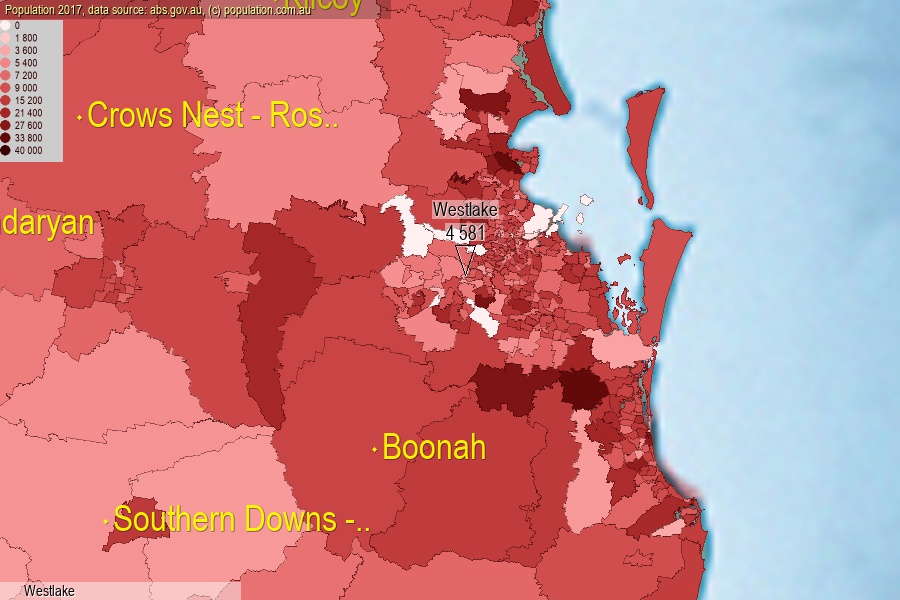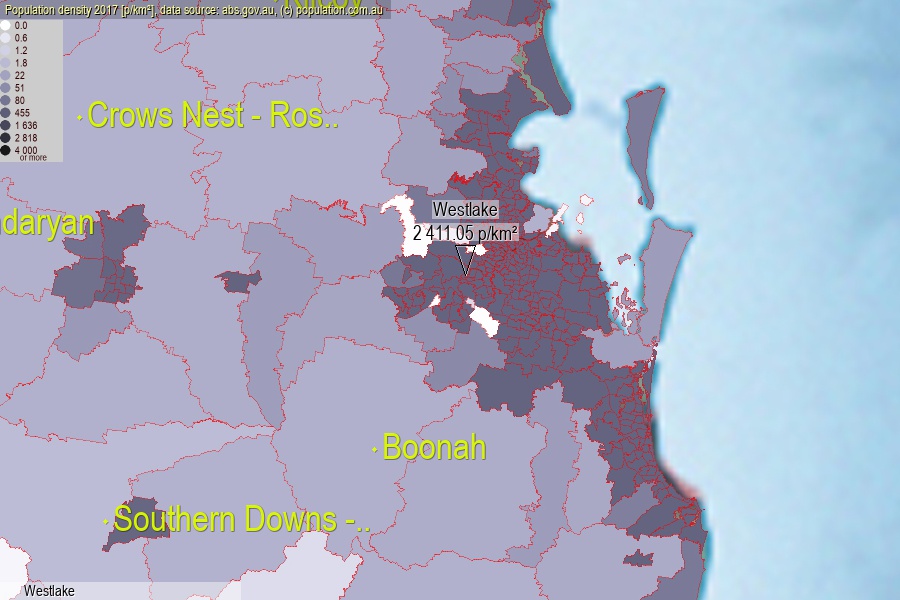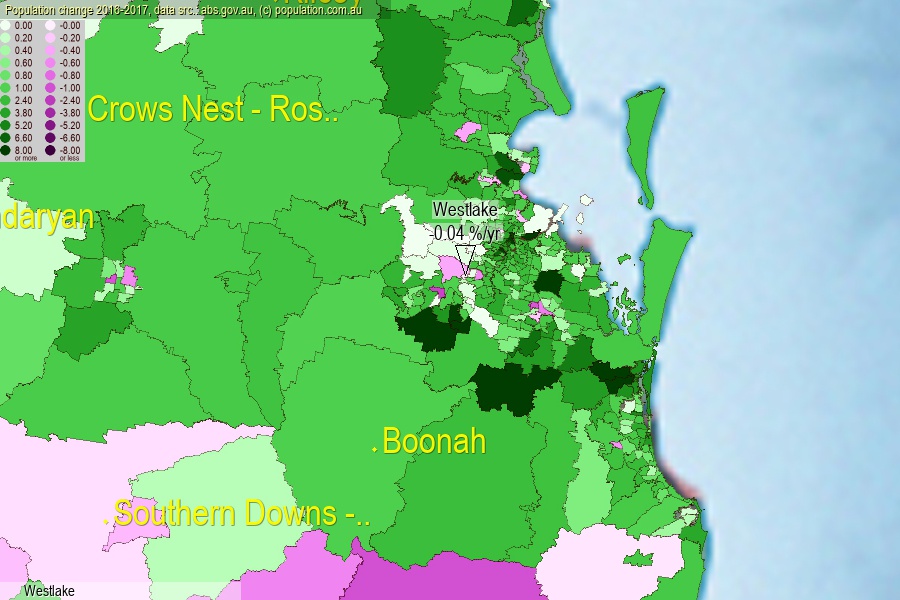 population.com.au
population.com.auLast official estimated population of Westlake (as Statistical Area Level 2) was 4 581 people (on 2017-06-30)[2]. This was 0.02% of total Australian population and 0.092% of QLD population. Area of Westlake is 1.90 km², in this year population density was 2 411.05 p/km² . If population growth rate would be same as in period 2016-2017 (-0.04%/yr), Westlake population in 2025 would be 4 565. [0]



Click to enlarge. Westlake is located in the center of the images.
Population [people], population density [p./km²] and population change [%/year] [2]
View borders » (new window) [4]
[1991-1992] -0.11 %/Yr.
[1992-1993] +2.72 %/Yr.
[1993-1994] +3.88 %/Yr.
[1994-1995] +13.19 %/Yr.
[1995-1996] +5.70 %/Yr.
[1996-1997] +3.06 %/Yr.
[1997-1998] +5.43 %/Yr.
[1998-1999] +3.92 %/Yr.
[1999-2000] +3.56 %/Yr.
[2000-2001] +4.34 %/Yr.
[2001-2002] +5.69 %/Yr.
[2002-2003] +5.68 %/Yr.
[2003-2004] +1.54 %/Yr.
[2004-2005] +0.21 %/Yr.
[2005-2006] +0.67 %/Yr.
[2006-2007] -1.67 %/Yr.
[2007-2008] -0.93 %/Yr.
[2008-2009] -0.39 %/Yr.
[2009-2010] -0.39 %/Yr.
[2010-2011] -0.71 %/Yr.
[2011-2012] +0.54 %/Yr.
[2012-2013] +0.41 %/Yr.
[2013-2014] -0.09 %/Yr.
[2014-2015] -0.39 %/Yr.
[2015-2016] -0.71 %/Yr.
[2016-2017] -0.04 %/Yr.
[0] Calculated with linear interpolation from officially estimated population
[1] Read more about SA2 and Australian Statistical Geography Standard (ASGS) on abs.gov.au
[2] Population data from Australian Bureau of Statistics (Population and density: 2017; change: 2016-2017)
[3] Digital Boundaries: Australian Statistical Geography Standard (ASGS) 2016.
[4] Border coordinates are simplifyed using Ramer-Douglas-Peucker algorithm.